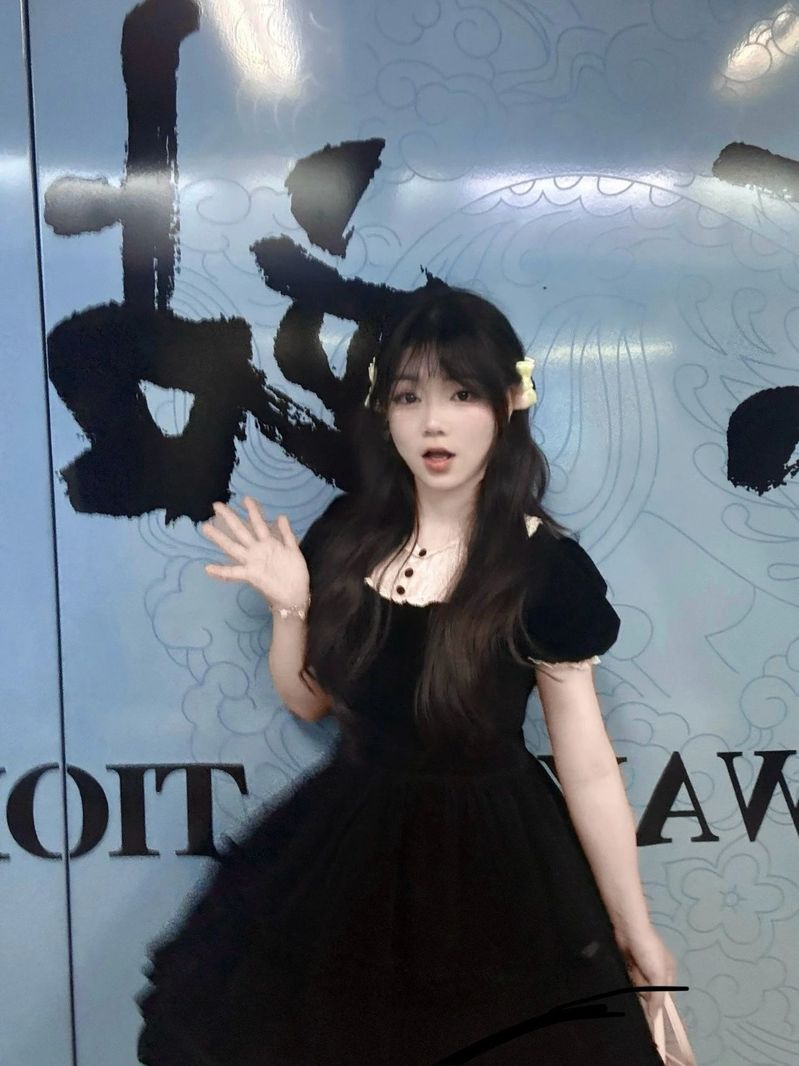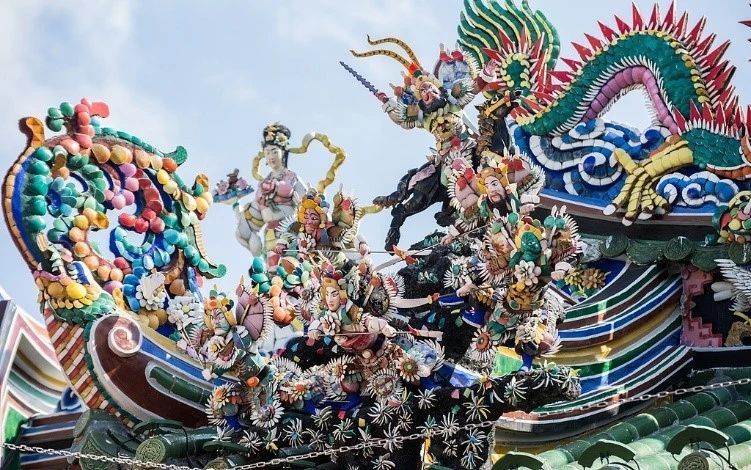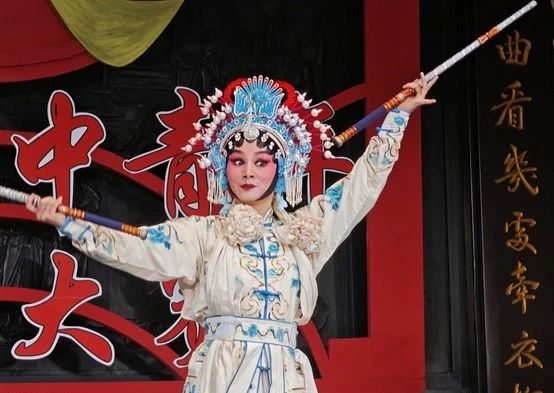粤剧是中国主要的传统戏曲艺术形式之一,起源于中国南方的广府文化,融合了音乐、演唱、武术、杂技和表演等元素。其历史跨越数个世纪,不仅在广东、广西、香港、澳门等地根深蒂固,更在东南亚、大洋洲、美洲等广府人聚居的地区拥有广泛影响力。自2006年被列入国家级非物质文化遗产以来,这一艺术形式承载着深厚的历史传统与文化价值。
本期让我们跟随英语2404班的李周缘同学的步伐,走进粤剧的华彩舞台。

蒲公“英”说书人
大家好,我是来自英语2404班的李周缘,爱好阅读、绘画。


原文
Cantonese opera is one of the major Chinese opera categories. It is a traditional Chinese art form that originated in southern China's Cantonese culture, and involves music, singing, martial arts, acrobatics and acting. Today it is not only very popular in Guangdong, Guangxi, Hong Kong and Macao, but also performed in Southeast Asia, Oceania and American countries where Cantonese people live.Cantonese opera was included in the first list of 518 state-level intangible cultural heritage elements, which was announced on May 20th,2006.
History Cantonese opera was originally called Narm hei (南戏), or Nanxi (Southern opera) in the Jiajing period of the Ming Dynasty, and was popular in Guangdong and Guangxi at that time. The first performance language was Central Plains music (中原音韵), also known as Theatre Mandarin. Later, at the end of the Qing Dynasty,Theatre Mandarin was changed to Cantonese so that it could be easy for people to understand. During the Qing Dynasty, Nanxi employed Banghuang as the basic tone and had also preserved tones of Kunqu opera, Ge opera and Guang opera.By absorbing the folk melodies and tunes of Guangdong, Nanxi was developed into the earliest kind of Cantonese opera.
During the Xinhai Revolution, many patriotic Cantonese performers promoted the idea of fighting with the Qing Dynasty, imperialism and feudalism through their performances in Cantonese opera. They often practiced and organized performances, and meanwhile absorbed the cream of dramas and movies. Soon Cantonese opera had been enriched by the cream of dramas and movies.
Dress-up of Cantonese opera Makeup At early stage, performers liked to wear a great deal of makeup, but they used very simple cosmetics. The main five colors-red, black, white, blue and yellow-symbolized loyalty, honesty, cattiness,arrogance and capability, respectively. Different roles might wear different types of make-up in order to match the role. However, in the 1920s performers preferred to wear light makeup, and the most common makeup was red-white face.
Costume In the beginning, Cantonese opera costumes reflected the clothing style of the Ming Dynasty. Later, as Peking opera became increasingly popular, it was'strongly influenced by Peking opera costumes. Costumes were made of cloth and later some accessories were added. Today embroidered costumes are the order of the day.
Different roles require different costumes. For example, an actor playing the Xiaosheng, a very gentle role, wears a costume with long sleeves, while the Xiaowu, an acting role, demands a costume with short sleeves so as to act easily.
Performing skills Generally, Cantonese opera performers have to master four skills:singing, acting/movement, delivery of speeches, and martial/gymnastic skills.Different roles conform to different requirements and are each sung in their own way. Males often sing falsetto to act as females. Until the 20th century, all female roles were performed by males. Acting refers to body language, including gestures and particular styles of walking on the stage. Performers deliver speeches to inform the audience of the opera's plot and the characters' emotions.
Cantonese opera has ten roles: Mo, Sheng, Dan, Jing, Chou, Wai, Xiao, Fu, Tie and Za. In order to perform these roles well, opera performers have to receive extensive training and master skills required by the role.
There have been many famous Cantonese opera performers. From the 1920s to the 1940s, Xue Juexian, who played Wen and Wu roles, and Ma Shi, who played Chou roles, made great contributions to the development of Cantonese opera.Today, Cantonese Opera Troupe plays an important role in the development and promotion of Cantonese opera.
Many Cantonese operas preach the importance of being loyal to one's country,filial to one's parents, and kind to one's friends. Therefore, Cantonese opera not only entertains, but also plays a significant part in cultivating good values.
本文摘录自:中国文化网 2023-11-15

译文
粤剧粤剧是中国戏曲的主要门类之一。它是一种传统的中国艺术形式,起源于中国南方的广东文化,涉及音乐、声乐、武术、杂技和表演。如今,它不仅在广东、广西、香港、澳门十分流行,而且在东南亚、大洋洲、美洲等广东人居住的国家也有演出。2006年5月20日,粤剧被列入首批518项国家级非物质文化遗产名录。
在明代嘉靖年间,粤剧最初被称为南戏,当时流行于广东和广西。第一种表演语言是中原音乐(韵),也被称为戏剧普通话。后来,在清末,戏剧普通话被改为广东话,以便于人们理解。清代时,南戏以梆簧为基本调,并保留了昆曲、广腔特征。通过吸收广东民间的旋律和曲调,南戏发展成为最早的一种粤剧。
辛亥革命期间,许多爱国粤剧演员通过粤剧表演,宣扬了与清朝、帝国主义和封建主义作斗争的思想。他们经常练习和组织表演,同时吸收戏剧和电影的精华。很快,粤剧就被戏剧和电影的精华所丰富。
早期的粤剧演员喜欢浓妆艳抹,但他们使用的化妆品非常简单。主要的五种颜色﹣-红、黑、白、蓝、黄﹣﹣分别象征着忠诚、诚实、狡猾、傲慢和能力。不同的角色可能会用不同类型的化妆品来配合角色。然而,在20世纪20年代,演员们更喜欢化淡妆,最常见的妆容是红白脸。
一开始,粤剧的服装反映了明朝的服装风格。后来,随着京剧的日益流行,粤剧受到京剧服饰的强烈影响。服装是布制的,后来加入了一些配饰。今天,粤剧同样也流行刺绣服装。
不同的角色需要不同的服装。例如,一个演员扮演小生,一个非常温和的角色,穿长袖的服装,而小武,一个武生角色,要求穿短袖的服装,以便于表演。
一般来说,粤剧演员必须掌握四种技能:唱做念打。不同的角色符合不同的要求,每个角色都有自己的演唱方式。雄性经常用假声来模仿雌性。直到20世纪,所有的女性角色都是由男性扮演的。表演指的是肢体语言,包括在舞台上的手势和特定的走路方式。演员们通过演讲来告诉观众歌剧的情节和人物的情感。
粤剧有十个角色:末、生、旦、净、丑、外、小、夫、贴、杂。为了演好这些角色,粤剧演员必须接受广泛的训练,掌握角色所要求的技能。
有许多著名的粤剧演员。从20世纪20年代到40年代,扮演文、武角的薛觉贤和扮演丑角的马师为粤剧的发展做出了巨大贡献。今天,粤剧团在粤剧的发展和推广中发挥着重要作用。
许多粤剧都宣扬忠于国家、孝顺父母、善待朋友的重要性。因此,粤剧不仅是娱乐,而且在培养良好的价值观方面也起着重要作用。

四六级关键词
Cantonese opera
(粤剧)
Intangible cultural heritage
(非物质文化遗产)
Performance skills
(表演技巧)
Roles and costumes
(角色与服饰)
Historical development
(历史发展)
Cultural values
(文化价值)
问答互动
1. When was Cantonese opera listed in the first batch of national intangible cultural heritage elements?
A.May 20, 2006
B.October 1, 2009
C.January 1, 2025
D.December 31, 2000.
2.What change occurred in the performance language of Cantonese opera during the late Qing Dynasty?
A.Changed from Cantonese to Theatre Mandarin
B.Changed from Theatre Mandarin to Cantonese
C.Began using English
D.Introduced Japanese dialogue
3.Which of the following is NOT included in the 'four skills' (唱做念打) of Cantonese opera performance?
A.Martial arts skills
B.Dance choreography
C.Speech delivery (lines)
D.Singing techniques




